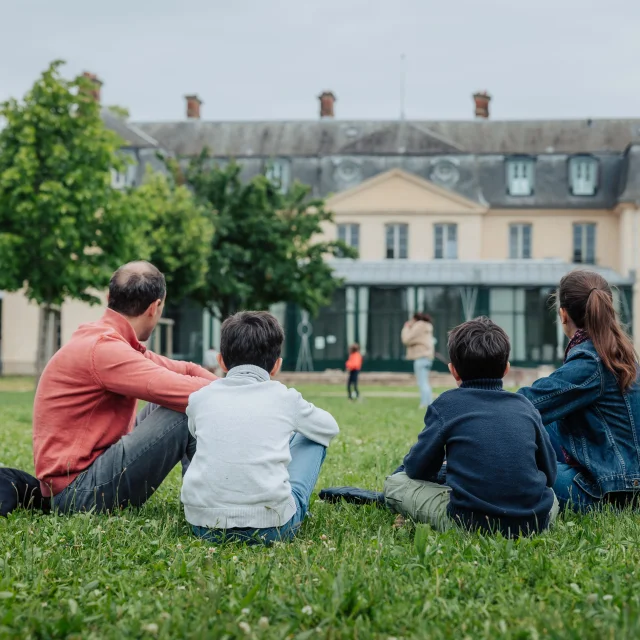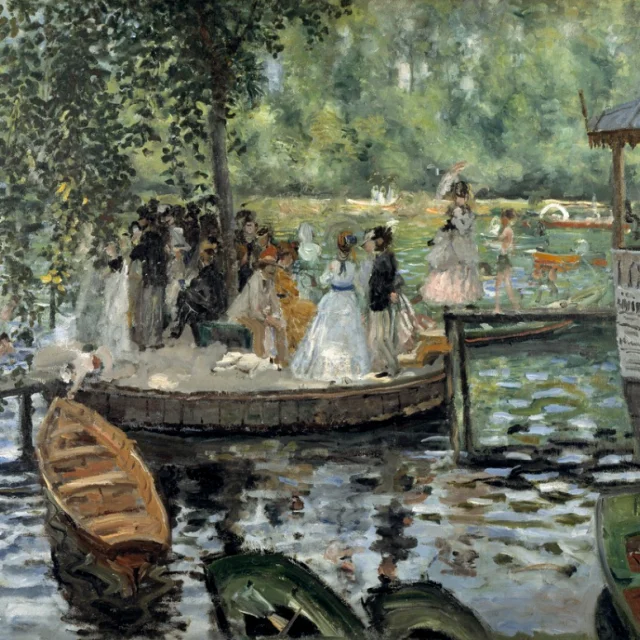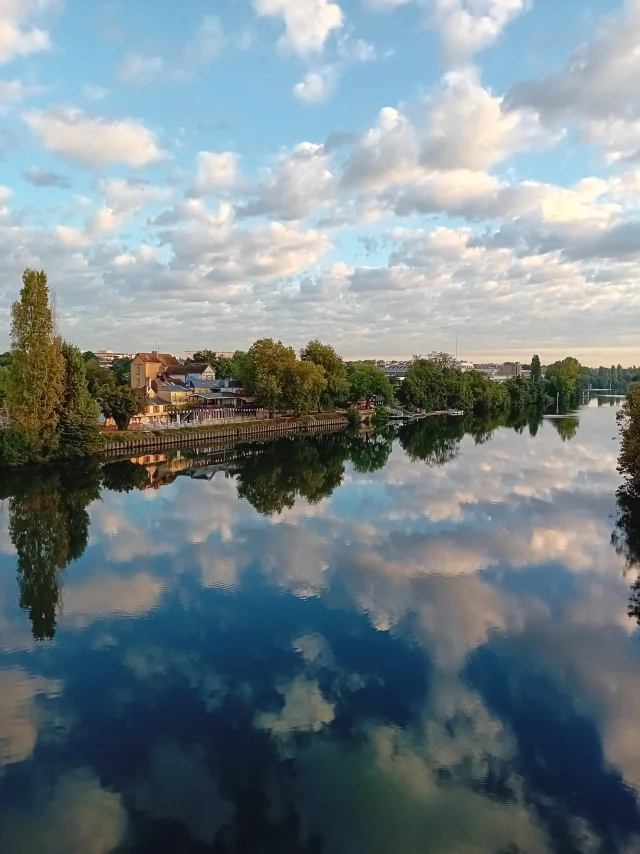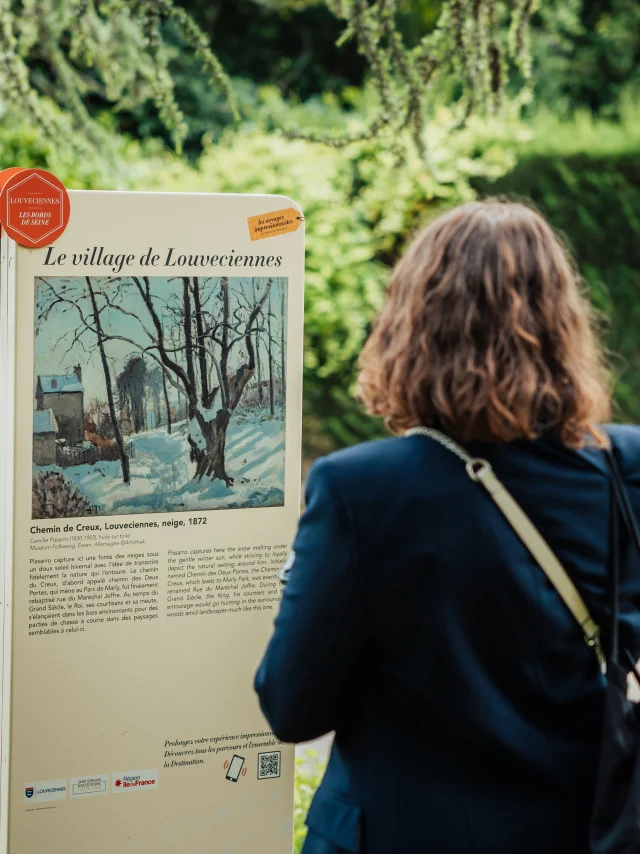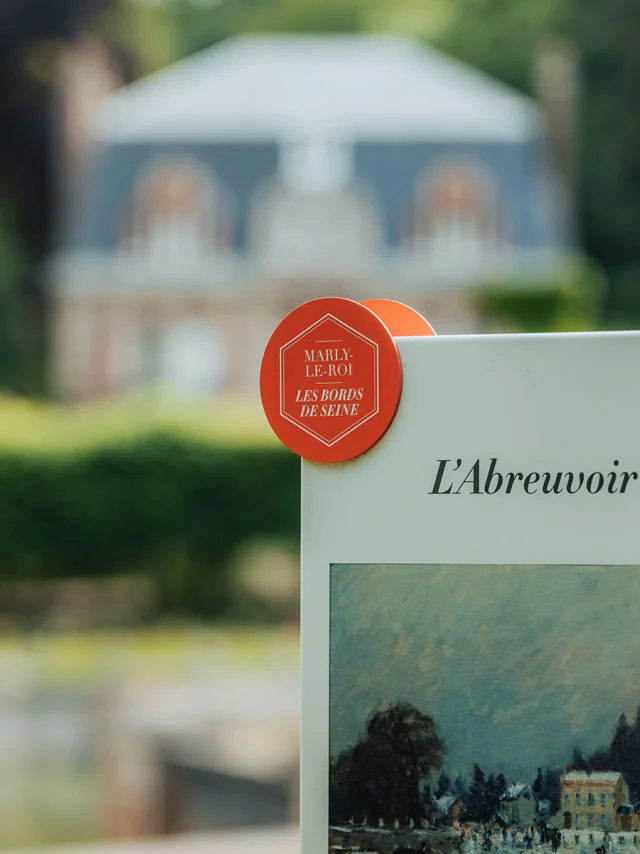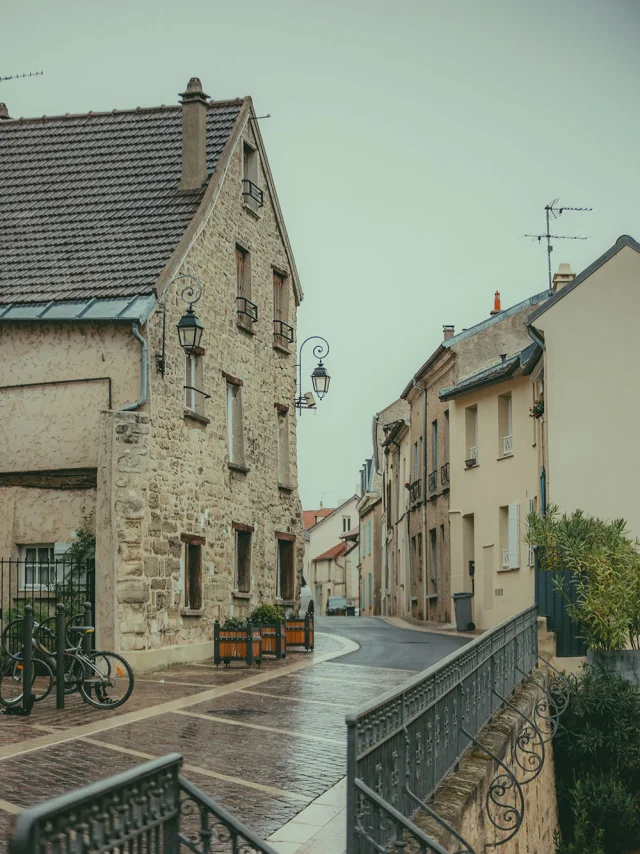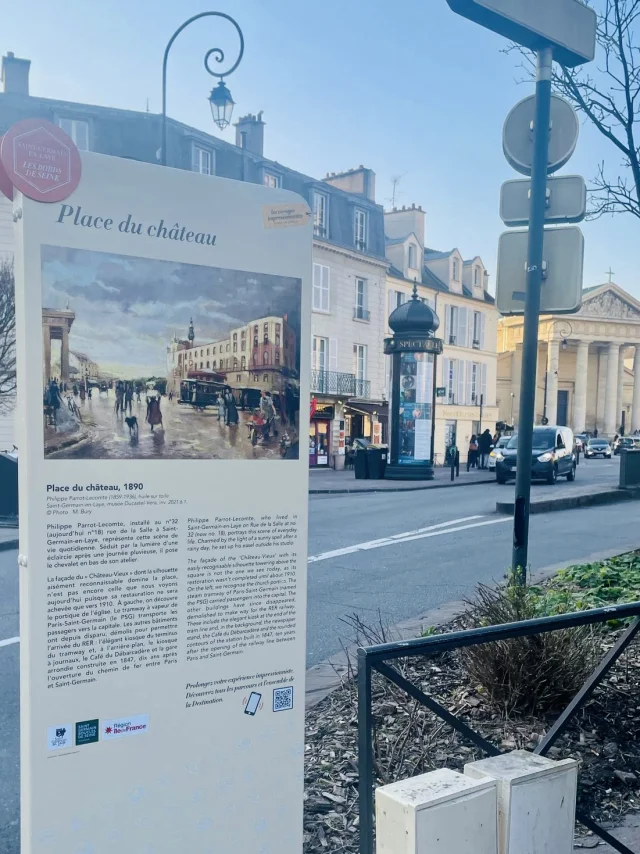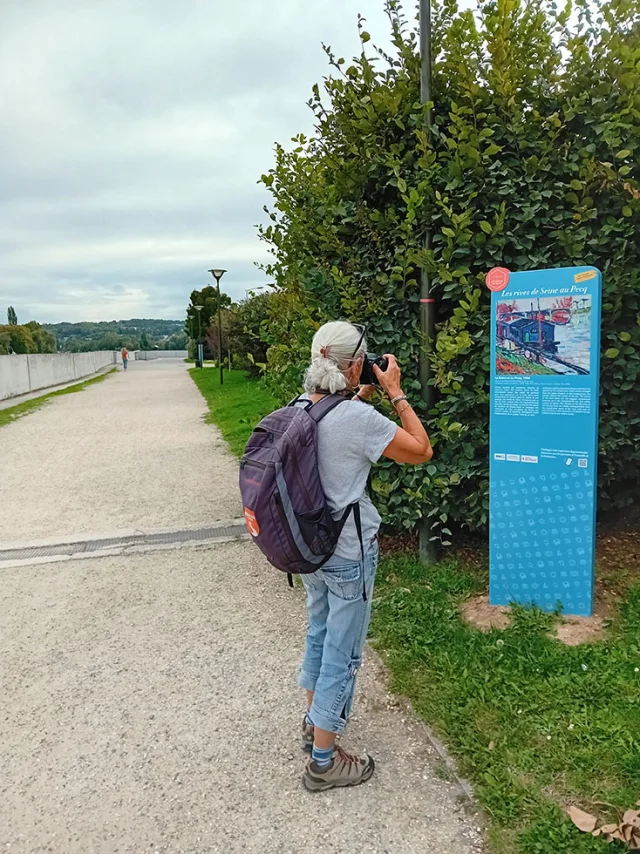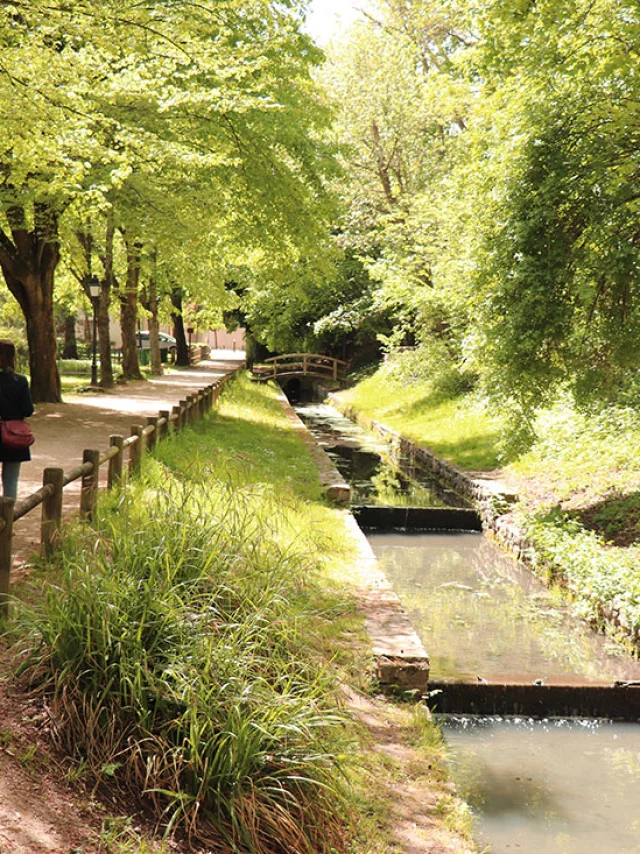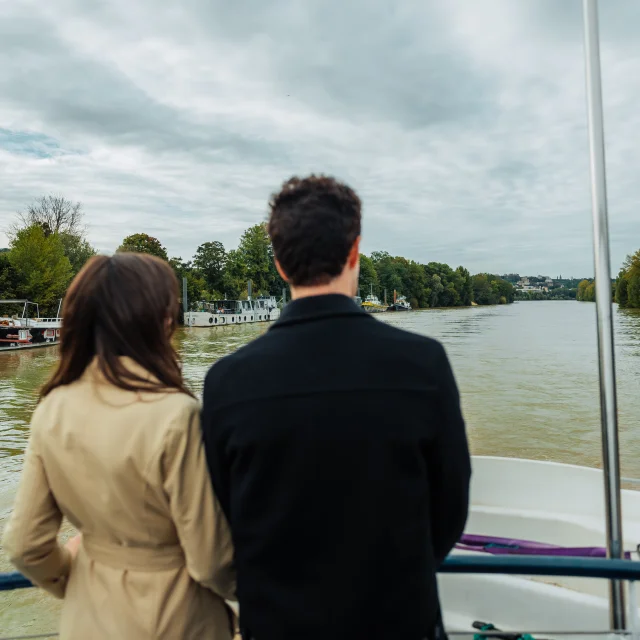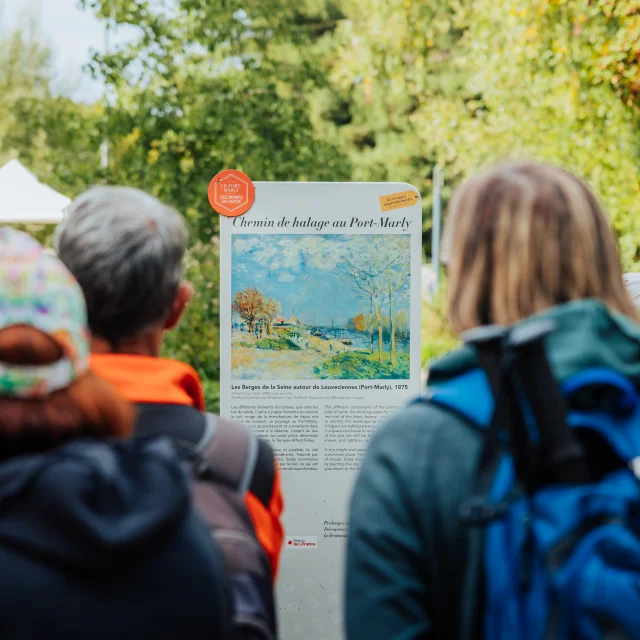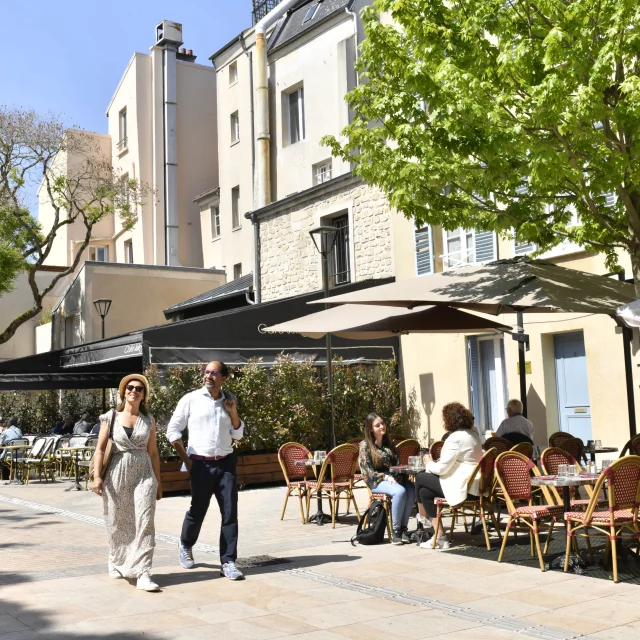You’re going to love discovering Croissy-sur-Seine; a paradise for family outings! The commune is bursting with activities and leisure activities to enjoy with friends and family. Find out all about Croissy during the Impressionist era, which inspired some of the movement’s most representative painters.
 Chemin Des Impressionnistes Croissy Nicolas Mauge
Chemin Des Impressionnistes Croissy Nicolas MaugeCroissy-sur-SeineBirthplace of Impressionism
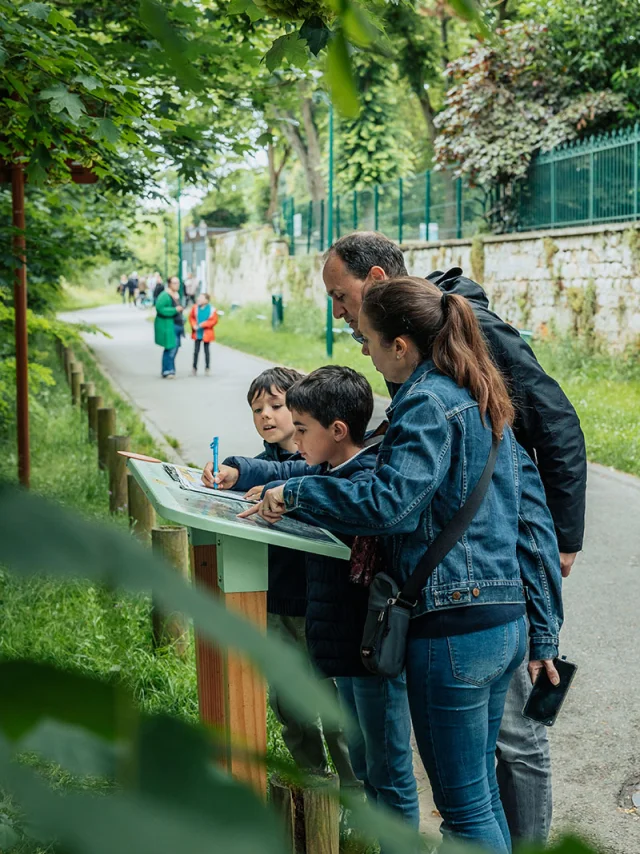 Chemin Des Impressionnistes Croissy Nicolas Mauge
Chemin Des Impressionnistes Croissy Nicolas MaugeMonet and Renoir: the beginnings of Impressionism
Claude Monet (1840-1926) grew up in Le Havre, where he painted Impression, soleil levant, in (1872), which contributed to the naming of the artistic movement “Impressionism”. In Le Havre, the support of the painter Boudin and the watercolourist Jongkind encouraged him to set up a studio in the capital. It was surrounded by forests and rivers that Monet transcribed his sensations through vivid and delicate brushstrokes in his compositions, making use of all the colours on his palette.
Before Monet met Pierre-Auguste Renoir (1841-1919), the latter was mainly known for his portraits and female nudes. Monet passed on to him his taste for reproducing landscapes and painting outdoors. He thus renewed his repertoire of colours and introduced lighting effects into his work. Nevertheless, he remained essentially a figurative painter.
In 1868, Renoir’s parents settled in a district of Louveciennes, the hamlet of Voisins. The painter surveyed the area on walks with his friends Camille Pissarro, Alfred Sisley, Fréderic Bazille and Claude Monet.
In 1869, Monet and his family took up residence in the hamlet of Saint-Michel in Bougival.
During the summer of 1869, Monet and Renoir walked the banks of the Seine at Croissy together and regularly visited the Grenouillère.
Some of the works, produced by Monet and Renoir depicting the Grenouillère, were painted from the cabin boat to which the café-flottant was moored.
Monet was inspired by the landscapes around him. In particular, the water and its backdrops, which he reproduced using superimpositions of light and dark strokes. This technique adds depth and relief, accompanied by an effect of transparency and movement, bringing his creations to life.
With the arrival of the first passenger train at Le Pecq in 1837, the tramway line between Rueil-Malmaison and Le Port-Marly, and the ferry, then the road bridge, between Croissy and Bougival, travel to the west of Paris increased.
In search of fun and relaxation away from city life, Parisians flocked to the nearby countryside. This is how guinguettes made their gradual arrival on the banks of the Seine. These buildings, created in the 18th century, refer to a young, inexpensive wine that was distributed there at the time: vin de Guinguet. These entertainment venues contributed to the boom in tourism, attracting bon vivant customers.
La Grenouillère, for example, met with success, almost immediately. It was in vogue with the bourgeoisie and bureaucrats, who came to relax in the cold, mixed baths, drinking absinthe, or practising wild dances.
Reputed for its loose morals, the history of this guinguette, is now told to you in the Grenouillère museum set up in the Chanorier outbuildings.
Chanorier: a modern-day leisure centre
Chanorier is a collection of spaces dedicated to heritage and culture in all its forms.
The venue brings together:
- The château, which each year hosts fun travelling exhibitions suitable for all ages, with workshops for children
- The Salon Romantique, which offers a series of concerts organised by the Pleyel-Chopin association
- A Micro-Folie de La Villette
- The Pavillon de l’Histoire locale, presenting the market gardening past of the town of Croissy-sur-Seine
- The Grenouillère museum
- La Clé Verte, a facility installed in the park focusing on ecology, nature and good environmental practices, accompanied by workshops for children during the school year
- An auditorium
- A library
- A music school
- As well as a restaurant in the near future.
Bref, Chanorier is the ideal place to spend a relaxing, convivial moment of discovery with your family!
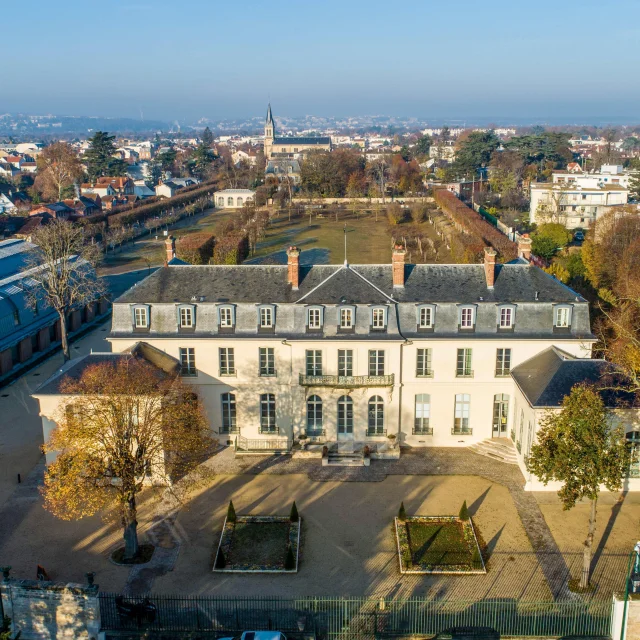 Château Chanorier at Croissy-sur-Seine
Château Chanorier at Croissy-sur-Seine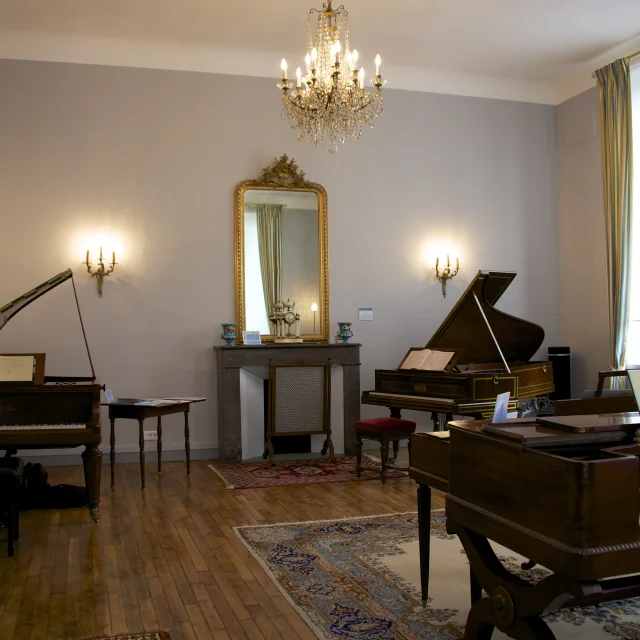 Salon vue Pleyel at Espace Chanorier
Salon vue Pleyel at Espace Chanorier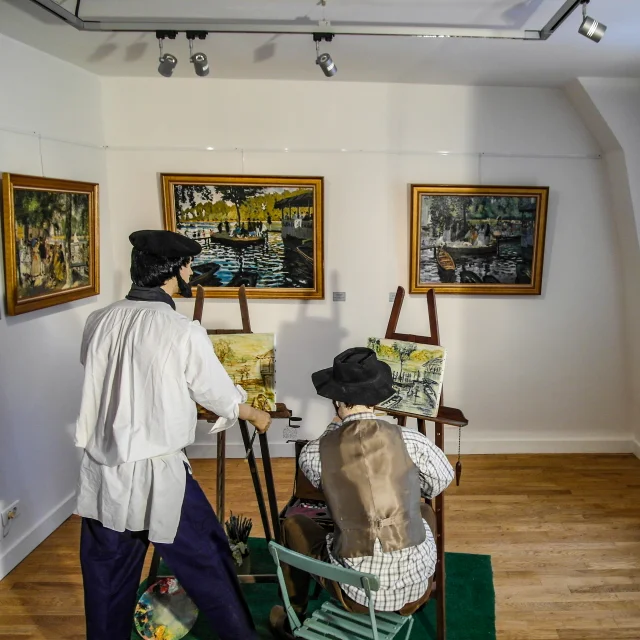 Grenouillère Museum in Croissy-sur-Seine
Grenouillère Museum in Croissy-sur-Seine A La Villette Micro-Folie at Espace Chanorier
A La Villette Micro-Folie at Espace ChanorierRoad book
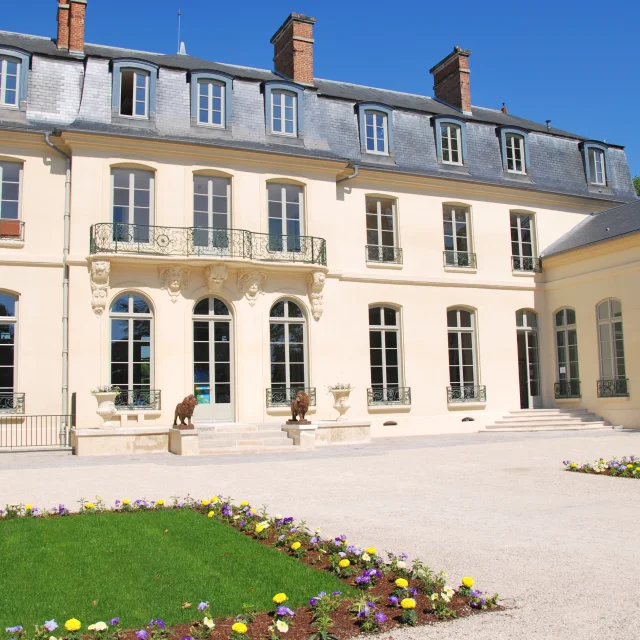 Chateau Chanorierotisgbs2018
Chateau Chanorierotisgbs2018A mustto discover
Hiding in the outbuildings of the Château Chanorier is a colourful museum: the Musée de la Grenouillère. A few steps up and you’re plunged back into the Belle Epoque!”
The Musée de la Grenouillère traces the history of the former guinguette of the same name, which Monet and Renoir used to frequent and which they reproduced in famous paintings.
This guinguette attracted Parisians eager for leisure between 1855 and 1928, including Monet and Renoir and Maupassant.
The Museum features a collection of engravings by Crafty, Pelcoq, Lafosse, Robida, Grévin and Steinlen, as well as paintings by the small masters of the banks of the Seine: Clary-Baroux, Heilbuth, Marius- Eraud, Maincent, Morlon…, copies of the canvases by Monet and Renoir that immortalised the Grenouillère in 1869 but also objects, describing the guinguette and the activities that were practised there such as canoeing that was very much in vogue at the time, cold baths, the Thursday evening ball, without forgetting to evoke the surrounding landscapes.
This iconographic heritage is also brought to life by temporary exhibitions on personalities or the habits and customs of La Grenouillère’s Belle Epoque.
